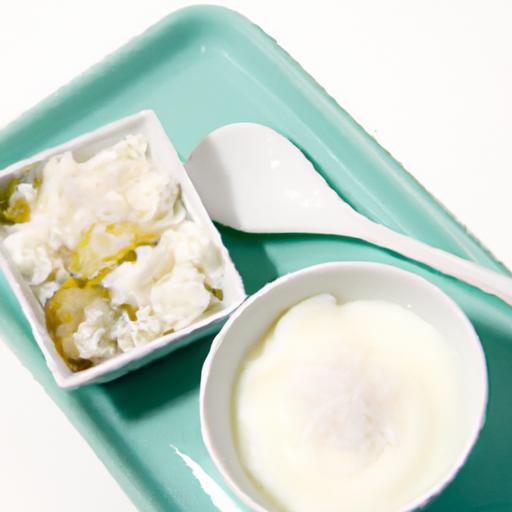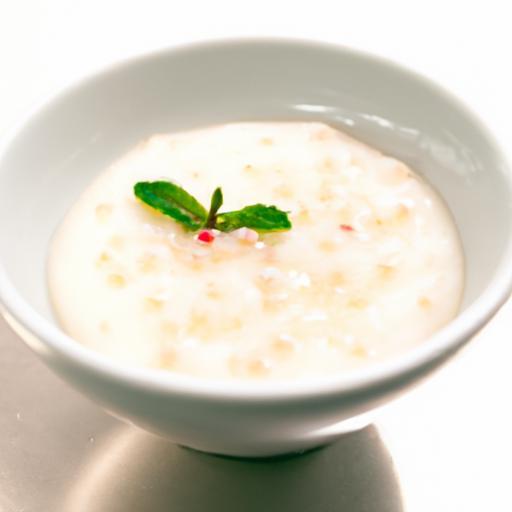There’s a familiar tang that dances on your tongue with every spoonful of yogurt-bright, lively, and unmistakably refreshing. But have you ever paused to wonder what sparks this tantalizing flavor journey? Beneath its creamy surface lies a microscopic symphony, where humble bacteria orchestrate a fascinating transformation known as fermentation. This ancient biological process not only preserves milk but also awakens it with a complex, tangy character cherished around the globe. In this article, we’ll dive deep into the science behind yogurt’s signature zing, uncovering how tiny microbes and biochemical magic combine to create one of nature’s most deliciously probiotic treats. You’ve provided an extensive list of topics related to flavor, taste perception, and food science. Would you like a detailed explanation on a specific topic, a summary covering several areas, suggestions on experiments, or answers to common questions and myths you mentioned? Please specify how I can best assist you!
Q&A
Q&A: The Science Behind Yogurt’s Tangy Fermentation Flavor
Q1: What gives yogurt its signature tangy flavor?
A1: The tangy flavor in yogurt primarily comes from the production of lactic acid during fermentation. Beneficial bacteria, mainly Lactobacillus bulgaricus and Streptococcus thermophilus, consume lactose (milk sugar) and convert it into lactic acid, which lowers the pH and introduces that pleasantly sharp tang.
Q2: How do the bacteria know to produce lactic acid?
A2: These bacteria have evolved to thrive on lactose in milk. When they metabolize lactose, lactic acid is their metabolic byproduct. It’s a natural process akin to a tiny biochemical factory transforming milk’s sweetness into a more complex, tart flavor profile.
Q3: Is yogurt’s tanginess purely from lactic acid?
A3: While lactic acid is the main contributor, other compounds like acetic acid, diacetyl, and various peptides also play supporting roles. These minor flavors add layers of complexity, creating that rich, nuanced tang rather than just plain sourness.
Q4: Does fermentation time affect yogurt’s flavor?
A4: Absolutely! The longer the fermentation, the more lactose is converted into lactic acid, intensifying the tartness. Short fermentation yields a milder flavor, while extended fermentation results in a bolder, sharper tang.
Q5: Can all yogurts taste the same?
A5: Not at all! Variations in bacterial strains, milk type, fermentation temperature, and duration all influence the flavor profile. That’s why Greek yogurt feels creamier and often tangier, while traditional yogurt can be milder or even slightly sweet.
Q6: Does the fat content in milk change the flavor?
A6: Yes, fat affects both texture and flavor perception. Higher fat content often softens the acidity and enhances creaminess, balancing the tang. Low-fat yogurts might feel sharper due to the absence of fat’s smoothing effect.
Q7: Is yogurt’s fermentation flavor beneficial for health?
A7: Besides tasting delicious, the fermentation process creates probiotics-live beneficial bacteria that aid digestion and strengthen immunity. The lactic acid environment also helps preserve the yogurt naturally, reducing harmful pathogens.
Q8: Can you replicate yogurt’s tangy flavor without fermentation?
A8: While you can mimic tartness using acids like lemon juice or vinegar, it won’t capture yogurt’s complexity. Fermentation creates a symphony of flavors and textures impossible to recreate by simple acid addition alone.
Q9: Why does yogurt sometimes taste more sour than others?
A9: Variability in fermentation time, bacterial strain activity, and storage conditions can influence sourness. Older yogurt typically becomes more sour as fermentation continues even after cooling, so fresh yogurt is milder.
Q10: How does temperature influence yogurt’s flavor during fermentation?
A10: Temperature affects bacterial activity speed. Warmer conditions (around 110°F/43°C) optimize fermentation, producing a balanced tang. Too hot can stress bacteria, leading to off-flavors; too cold slows fermentation and results in milder taste.
Unlocking the science behind yogurt’s tangy magic reveals that each tart bite is a tiny triumph of microbial artistry-where nature’s microscopic chefs transform humble milk into a delicious dance of flavors!
In Summary
As the last spoonful of yogurt melts on your tongue, you’re tasting more than just a dairy delight-you’re savoring the intricate dance of microbes and molecules, a microscopic symphony that transforms humble milk into a tangy treat. This flavorful fermentation isn’t just a culinary wonder; it’s a testament to science’s ability to harness nature’s tiniest artisans. So next time you enjoy that creamy bite, remember: behind yogurt’s vibrant zing lies a fascinating world of biochemical magic, patiently crafted by the invisible chefs of fermentation.


